ON ALL ORDERS OVER $99 SHOP NEW ARRIVALS! WHOLESALE & CUSTOM ORDERS
SPECIAL PRICING AVAILABLE FOR 10 PLUS PIECES

The Evolution of Men's Suits
New Arrivals
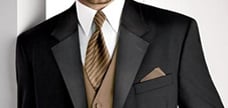
Tuxedo

Stripe suits
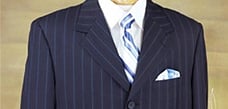
- Black Pinstripe Suits
- Shadow Pinstripe Suits
- Pinstripe Suits
- Gray Pinstripe Suits
- Brown Pinstripe Suits
- Tan Pinstripe Suits
- Shiny Sharkskin Suits
Dark color suits
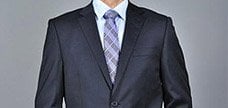
- Simple Black Suits
- Jet Black Suits
- Liquid Black Suits
- Navy Blue Suits
- Charcoal Gray Suits
- Burgundy Suits
- Brown Suits
Unique suits
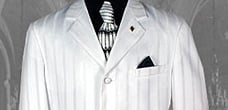
Festive color suits
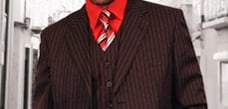
- Red Men's Dress Suits
- Purple Mens Suits
- Pink Mens Suits
- Yellow Mens Suits
- Lime Green Suits
- Sky Blue Suits
- Royal Blue Suits
Filter Mens Suits

- Sharkskin suit
- Linen suits
- Seersucker suit
- Italian suit
- Plaid Patten Suits
- Denim Suits
- Pinstripe Suits
- Shadow Stripe Suits
- Bold Pinstripe Suit
![]() With 150 years of tradition behind Men's Suit, it can be said that there is no other type of men's dress available in the market today that is as elegant and stylish as a suit. With its designs to flatter its wearer and removes the flaws, it is something unique - the like of which you can never think of.
With 150 years of tradition behind Men's Suit, it can be said that there is no other type of men's dress available in the market today that is as elegant and stylish as a suit. With its designs to flatter its wearer and removes the flaws, it is something unique - the like of which you can never think of.
Suits are most highly demanded over all the other types and styles of men's attires. One of the primary reasons why the men's suits are so popular is because they are meticulously designed to hide all the flaws and highlight all the strong points without making the suit uncomfortable to the wearer. All the aspects of a great suit are designed to flatter the wearer and make them more aesthetically appealing to all those around him.
The men's suit is today the most universally expected item in a gentleman's wardrobe. The key to elegance begins with the suit, the cornerstone of men's fashion. A suit is a pair of jacket and trousers of the same cut, made from the same fabric, and intended to be worn together.
The history of men's suits makes fascinating study. The seventeenth century witnessed the historic turning point when men gave up the cumbersome cloaks and doublets and took to wearing suits. During the long reign of King Louis XIV (in the year 1650 to be more accurate), men ceased wearing cloaks and doublets which was till then the widely accepted male attire. Men began wearing vests, coats and breeches which evolved into a trend we now acknowledge as 'men's suits.'
Tailoring, the cutting and sewing of cloth as we understand it today, developed gradually in Europe between the twelfth and fourteenth centuries. This paradigm shift in male attire was indeed revolutionary compared to how men were hitherto dressed with traditional wigs, trousers, hats and long coats. During the 18th century men's suits were considered a luxury garment that became popular among the French.
However, the concept of men's suits became the norm only after the British garment makers in London used their expertise to enhance the elegance and aesthetics of men's suits. We have come a long way and presently it is customary for men to wear suits for all occasions - business meets, social gatherings, weddings, funerals etc.
Following the civil war, the British became pronouncedly more sophisticated and this was reflected in their attire. The clothing of the upper-class and business men became ever more polished and elegant during the 18th century.
![]() During the early part of the 18th century, the men's suits acquired a touch of refinement and became a status symbol. Men's suits started with smaller lapels and shorter suit coats with straight cuts in the 1960s. With the advent of the 1970s, men's suits went through a churning period. The three piece suits were on their way out and double breasted and two-piece single breasted suits became the order of the day.
During the early part of the 18th century, the men's suits acquired a touch of refinement and became a status symbol. Men's suits started with smaller lapels and shorter suit coats with straight cuts in the 1960s. With the advent of the 1970s, men's suits went through a churning period. The three piece suits were on their way out and double breasted and two-piece single breasted suits became the order of the day.
The first ten years of the present 21st century witnessed the widespread popularity of the three button two-piece suit for men. As fashion keeps constantly changing, this trend saw some variations as the years progressed. In the autumn of 1930s, bigger was better, with double-breasted suits, full-cut trousers, and tuxedos with tails setting the standard for how a gentleman should dress.
The Man Suit - whether lounge or business or casual - was a set of garments which were crafted from the same cloth. The current styles in men's suits were part of a sartorial revolution that took place during the early 19th century. This dramatically altered the elaborately embroidered and jeweled Formal Suit into simpler unostentatious styles. It was the pursuit for more comfort that gave rise in the late 19th century to the modern lounge suit.
The suit is a traditional form of men's formal attire in the entire Western world. For some three hundred years and more, suits of matching coat, trousers, and waistcoat have been in and out of fashion. This feature is seen more recently in British tailor's use of steam and padding in molding woolen, the ushering in of the neckties, and the gradual abandoning of waistcoats and hats during the last fifty years.
The modern lounge suit, in its present form, surfaced in the late 19th century -0 though its origins were somewhat established by the British king Charles II in the 17th century.
Following the Renaissance the primary function of clothing to conceal the body shifted to a fashion design whereby clothing was used to accentuate certain physical features. Following this transition the tailoring profession grew in importance with masters of the craft working towards developing trendy garments. Innovations such as sewing machines and more comfortable garments have had their impact in the development of the modern men's suit.
It is noteworthy that in the early 19th century, Beau Brummell redefined and adapted the present day suit style and then took pains to popularize it. Men became more and more dress-conscious and began wearing well-cut, tailored clothes, accompanied by exquisitely knotted neckties. Brummell's powerful influence introduced the modern era of men's clothing which now includes the modern suit and necktie.
![]() During this Regency period, the predominantly elite men's suits introduced by Brummell was a tightly fitting, dark colored tailcoat with non-matching lighter shade trousers, pale waistcoat, white shirt and cravat and tall boots.
During this Regency period, the predominantly elite men's suits introduced by Brummell was a tightly fitting, dark colored tailcoat with non-matching lighter shade trousers, pale waistcoat, white shirt and cravat and tall boots.
The 1920's were an extremely unique decade in the history of men's suits. During the 1920s, short suits were rampantly worn except on formal occasions. During formal occasions, however, morning coats were the acceptable men's wear. A section of old conservative men continued to wear a frock coat, or "Prince Albert coat" as it was then known.
In America, for evening occasions, the short dinner jacket replaced the long full dress tails. In Britain, black tie became an acceptable accessory as a general informal alternative to white tie.
In the 1920s men started wearing wide, straight-legged trousers with their suits. Trousers also began to be worn cuffed shortly after World War I and this style persisted until World War II. Single-breasted suits were in style throughout the 1920s and the double breasted suit was mainly worn by traditionalists. In the 1920s, very fashionable men would often wear double-breasted waist coasts along with single-breasted coats. Lapels on single-breasted suits were fashionably worn peaked and were often wide.
During the year 1935, a drastic change in suit style occurred. Loose fitting coats became the norm, trousers began to be tapered at the bottom and suit coats began to have tapered arms. These new trends were not readily preferred by men at first. By 1940, the waistcoat began to be made in a loose style which was uncomfortable to wear. Elite men switched over to the double-breasted suit coat at this time and it continued to be the trend for the next two decades. In modern times the black lounge suit has become popular to wear during the day.
Throughout the 1940s and 1950s the efforts were to simplify and modernize the suit as much as possible. For example, by the 1960s the size of the lapel had shrunk dramatically. Suit coats were also cut as straight as possible making the waistline inconspicuous. Cloth rationing was the order of the day and this changed styles significantly, contributing to a severe reduction in the popularity of many cuts, such as the double-breasted suit.
In the 1970s, a snug-fitting suit coat became popular once again and this style permitted the return of the waistcoat. The tight three-piece suit was associated with the discotheque culture. The socially conservative resentment of disco music culture put an end to the popularity of snug-fitting three piece suits. In the late 70's, it was wool coats that were in fashion along with enormously long trench coats. To make matters easy, modern fashion labels have managed to recreate woolen suits that are supremely comfortable to wear due to their light weight.
The 1980s saw the trend towards the simplification of the suit resurfacing. The jacket became somewhat loose and the waistcoat was completely discarded. A few suit makers however persisted with waistcoats, but these waist coats tended to be cut very low and often had only four buttons. By 1985-1986, three-piece suits went out of fashion and made way for cut double-breasted suits and two-piece single-breasted.
Most fashion experts agree that historically speaking there are three major styles of suit, named after the countries in which they originated - though it is now quite common to find all three styles in almost all countries. The first style is the English style known for its soft, unpadded shoulders, an hourglass body with a high waist, either double or single breasted, fitted with two or three buttons and side vents.
![]() The next is the Italian style or more familiarly called Continental style. This style is of a lightweight construction, squared and high shoulders, and a short close-fitting single-breasted body, with two buttons and without any vent. The third style is the American Suit, a natural-shoulder suit with a straight and somewhat roomier body, two or three-buttons, and a back vent.
The next is the Italian style or more familiarly called Continental style. This style is of a lightweight construction, squared and high shoulders, and a short close-fitting single-breasted body, with two buttons and without any vent. The third style is the American Suit, a natural-shoulder suit with a straight and somewhat roomier body, two or three-buttons, and a back vent.
Today all suit designers have been influenced by all three styles, and most suits are a combination of the distinctive elements from each one of the styles. A man who takes pride in his suit also causes others around him to unwittingly compare them with him. This, technique provides the stylish and sophisticated man with the upper hand in many situations.
When it comes to colors, this type of suits for man have white, off-white, gray, black, beige, dark blue, navy blue as well as pinstripes. There is a plethora of men's suits and a vast range is available in different types of fabrics, designs and cuts.
The journey to man's sartorial excellence has been long and tedious but in the end highly rewarding. Essentially, a Modern Suit is slimmer through the torso, with a narrower lapel, slightly shorter jacket, and flat front pants that lean toward the slim side for a better fit. There were times when men's suits were worn only on special occasions, but now with suits being designed in accordance to varied occasions, men can simply opt for suit for any given occasion.
The truth of the matter is that there are as many styles of suits as there are men of different body shapes. Essentially, a modern suit is slimmer through the torso, with a narrower lapel, slightly shorter jacket, and flat front pants that lean toward the slim side for a better fit. For today's man, the modern style suit is the absolute must-have in his wardrobe.
In today's age and time, it is hard to imagine a man's wardrobe without at least one suit. Having a modern style suit in your wardrobe is essential for a man of style in today's world. It is a great investment that you will never ever regret you have made.
![]() There certainly is not other outfit in a man's arsenal that symbolizes both power and class as a well tailored suit. A suit is not simply a piece of clothing to cover the physical frame but it is a male garment that projects professionalism and lends a clear and distinctive personality to the wearer.
There certainly is not other outfit in a man's arsenal that symbolizes both power and class as a well tailored suit. A suit is not simply a piece of clothing to cover the physical frame but it is a male garment that projects professionalism and lends a clear and distinctive personality to the wearer.
Even though general fashion sense have changed over the centuries, men's suits have unquestionably withstood the ravages of time. Keeping with the times, trends and evolution of smart attires, men have experimented with suits to their optimum satisfaction. Suits across various time periods have defined the code of dressing for the sophisticated class.
Once upon a time, men adhered to strict fashion rules, but today4s top designers say the modern man is now willing to take risks to wear unorthodox style suits to create a more personal look.
However, while the suit might be historically old, it is definitely eternal and undying. Men till today continue to prefer to be in their suits no matter what the occasion. Besides, women also prefer their men to be well decked up in suits as men usually look stylish and highly elegant when appearing in suits.
Today, there is a refreshing style variation in men's suits. As we observe new profiles emerge and exciting contours take centre stage, it is exciting to celebrate 150 years of the man's suit.
Suits by style
- 1 (Single) Button Mens Suits sale
- 2 Button Mens Suits sale
- 2 Button Jacket with Pleated Pants
- 4 & 5 Button Mens Suits sale
- Double Breasted Mens Suits sale
- Mens Suit Under $99
- 3 Button Mens Suits On Sale
- 3 Button Mens Suits On Sale
- Super Light Weight 3 Button Suit
- 2 or 3 Button Mens Suits sale
- Long Zoot Mens Suits sale
- 3 Piece & Vested Mens Suits sale

Fashion Color Suits
- White & Off White Suits
- Red Suits
- Purple Suits
- Pink Suits
- Yellow & Gold Suits
- Olive Green Suits
- Lime Green & Mint Suits
- Royal & Sky Blue
- Peach / Orange Suits
- Burgundy Suits
Slim Fit
Shop by Fabric
By Pattern
Wedding Suits
- Mens Wedding Vests
- Mens Tuxedo Suit
- Mens Blue Tuxedo
- Designer 2Button Tuxedo Sale
- Online Zoot Suit Store
- Purple Tuxedo Wedding
- Burgundy Wedding Suit
- Wedding Jackets Mens
- Corduroy Suit Jacket Sale
- Cheap Mens Formal Wear
- 1 Button Tuxedo Suits For Sale
- 1 Button Wedding Suits For Men
Mens Blazers
- Affordable Velvet Men's Blazers
- Mens Blazers Near Me
- Mens Blue Wedding Suits
- 3 Piece & Vested Suits For Sale Online
- Blazer For Men Wedding
- Cheap Mens Blazers Online
- Tuxedo Jackets For Sale
Accessories













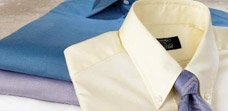
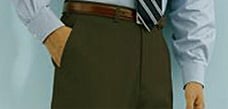


.jpg)
.jpg)
